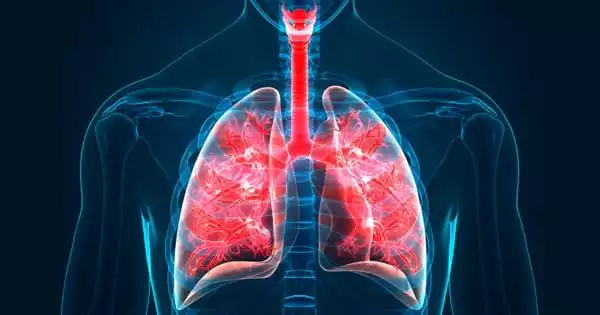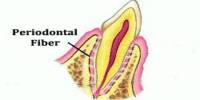Ticks can be found almost anywhere. Simply go outside and look for some greenery. Look up to the apex of the gleaming, green blade, which is normally ankle-high. A tick could be lurking nearby.
If something breathing brushes up against grass, the tick uses its hypostome, which looks like a needle and has thousands of fishing hook barbs, to embed itself into the skin. Lyme disease can be transmitted to its host after around 24 hours of feeding if it goes unnoticed.
The bacterium that causes Lyme disease has a highly uncommon change in its protective molecular bag, known as peptidoglycan, which is found in all bacteria, according to Virginia Tech researchers.
This bacterium’s alteration is unparalleled; it’s a peculiar sugar modification that has never been seen before in any creature. Ticks provide the bacterium with this sugar alteration by ingesting a carbohydrate that is only found in ticks. The change is unique to ticks and allows the bacterium to move more freely, making it more likely to cause sickness.
“We believe this change is critical to how the bacterium causes disease and is something that we can exploit for both therapeutic and diagnostic purposes,” said Brandon Jutras, an assistant professor of biochemistry in the College of Agriculture and Life Sciences and an affiliated faculty of the Fralin Life Sciences Institute and the Center for Emerging, Zoonotic, and Arthropod-Borne Pathogens.
The findings were recently published in Nature Microbiology.
“Partaking in this research was the most engaging and rewarding experience of my academic career at Virginia Tech,” said lead author Tanner DeHart ’20 and ’21, who earned his undergraduate and master’s in biochemistry at Virginia Tech and is now a Ph.D. student at Harvard University. “This opportunity allowed me to hone my scientific skill-set, develop as a more independent researcher, and obtain first-hand experience with many experimental techniques and designs.”
The number of recorded cases of Lyme disease in the United States has increased dramatically over the last two decades, as has the geographic dispersion of the disease. The disease is transmitted in Virginia by the bite of infected black-legged ticks carrying the Lyme disease-causing bacteria Borrelia burgdorferi.
B. burgdorferi loses peptidoglycan after it invades the human body, according to Jutras. Despite the fact that all bacteria contain peptidoglycan, many do not discharge it.
Lyme disease is caused by a separate bacterium. It manufactures its peptidoglycan and components in an unusual way.
The remarkable thing here is that the bacteria that causes Lyme disease is sucking up a breakdown product of its tick vector and uses it to help make this unusual molecule. What’s more fascinating is that it appears that the bacterium has evolved this fine-tuned adaptation to make it move effectively, which is a feature required for disease.
Brandon Jutras
Researchers couldn’t figure out these anomalies a few years ago. They were missing large pieces of data. They discovered a couple of the missing puzzle pieces after four years of searching. They don’t know how the bacterium gains this mutation, but they do know how it is made.
B. burgdorferi uses a breakdown product of chitin, a structural carbohydrate-containing bound sugar molecules generated from modified glucose, in its peptidoglycan. Ticks’ chitin is an important component.
“The remarkable thing here is that the bacteria that causes Lyme disease is sucking up a breakdown product of its tick vector and uses it to help make this unusual molecule,” said Jutras, also an affiliate of the Translational Biology, Medicine, and Health Graduate Program at Virginia Tech. “What’s more fascinating is that it appears that the bacterium has evolved this fine-tuned adaptation to make it move effectively, which is a feature required for disease.”
As a result of this adaption, bacteria is one of the fastest-moving species on the earth.
Identifying the sugar, chitobiose, the breakdown product of chitin, was the crux of the research and discovery from a technical aspect.
The researchers used LCMS, liquid chromatography coupled with mass spectroscopy, in The Mass Spectrometry Research Incubator (VT-MSI), directed by Rich Helm, from the Fralin Life Sciences Institute’s Core Services, to determine chitobiose was the genuine sugar. They also used C13 tagged sugars in nuclear magnetic resonance and metabolic labeling tests to confirm the identity of the unique alteration.
In doing so, they figured out why the bacterium has this modification.
B. burgdorferi moves by swirling or twisting its own body with its flagellum. The flagellum is a propeller that is attached to the outside of the bag. The propeller spins against this large molecular sack, propelling itself forward. They can easily pass through muscle tissue and even cartilage using this approach.
What is the significance of sugar modification? It makes the bag more flexible and able to withstand torque.
The peptidoglycan’s flexibility was investigated using atomic force microscopy.
“The material is much more flexible and elastic in the sense that allows them to propel themselves,” Jutras said. “If they don’t have that modification, the material comes much stiffer, and the ability to move is impaired.”
It had previously been hypothesized that this bacterium requires flexibility, but no one knew how or why.
“We need to understand this mechanism because it would be a perfect target for therapy,” Jutras said. “We know one way when it’s in the tick. But how does it make this modification when it’s in a human? There’s minimal to no chitin in a human. When we impair the bacterium’s ability to suck up chitobiose, they still have this modification. There’s just much less of it.”
That suggests the bacterium has a second method for modifying its peptidoglycan. The next stage in the research is to figure out how the bacterium produces this change inside a human, and Jutras and his team are already looking into it.
The disease is transmitted in Virginia by the bite of infected black-legged ticks carrying the Lyme disease-causing bacteria Borrelia burgdorferi. Max Esterhuizen shot this photo for Virginia Tech.
A long and winding road
The peptidoglycan in B. burgdorferi stays in the bodies of Lyme arthritis sufferers after the bacteria has entered the body, according to Jutras’ earlier research. The peptidoglycan persists weeks to months after the initial infection, causing inflammation and pain.
The researchers uncovered a protein associated with Borrelia burgdorferi’s peptidoglycan that acts as a molecular beacon that antagonizes the immune system, boosting inflammation in Lyme arthritis patients.
The new discovery by Jutras and his colleagues could explain why the peptidoglycan can linger in Lyme patients and cause arthritis. The peptidoglycan of B. burgdorferi, unlike the trillions of bacteria in and on human bodies, cannot be processed by the human body.
“From the perspective of a bacteriologist, this is a paradigm shift in how we understand peptidoglycan, an essential molecule produced by virtually all bacteria and the most common antibiotic target,” Jutras said.
B. burgdorferi’s peptidoglycan is unique among bacteria, making it an appealing biomarker for diagnostics. Biomarkers are unique molecular signatures, similar to hashtags, that operate as an indicator that something is wrong with a system and are frequently used to identify cancer.
This earlier study and discovery led to the discovery of B. burgdorferi’s self-altering characteristics and potential diagnostic approaches. This exceedingly rare molecule, as well as the bacteria that release these compounds, are the subject of new study directions.
“As diagnostics goes, that’s an exciting new area of research for the lab as it relates to this discovery because this is a very unusual molecule,” Jutras said. “The bacterium sheds these molecules and this discovery could lead to developing a diagnostic tool focused on detecting this unusual molecule, much like a biomarker for Lyme disease. An approach that could make Lyme disease diagnosis as simple as a COVID-19 rapid test.”
The investigation into the most commonly reported vector disease in the country is underway. In the meantime, continue to check for ticks.
The Steven and Alexandra Cohen Foundation, the National Institutes of Health, and the Bay Area Lyme Foundation all contributed to the study.
















